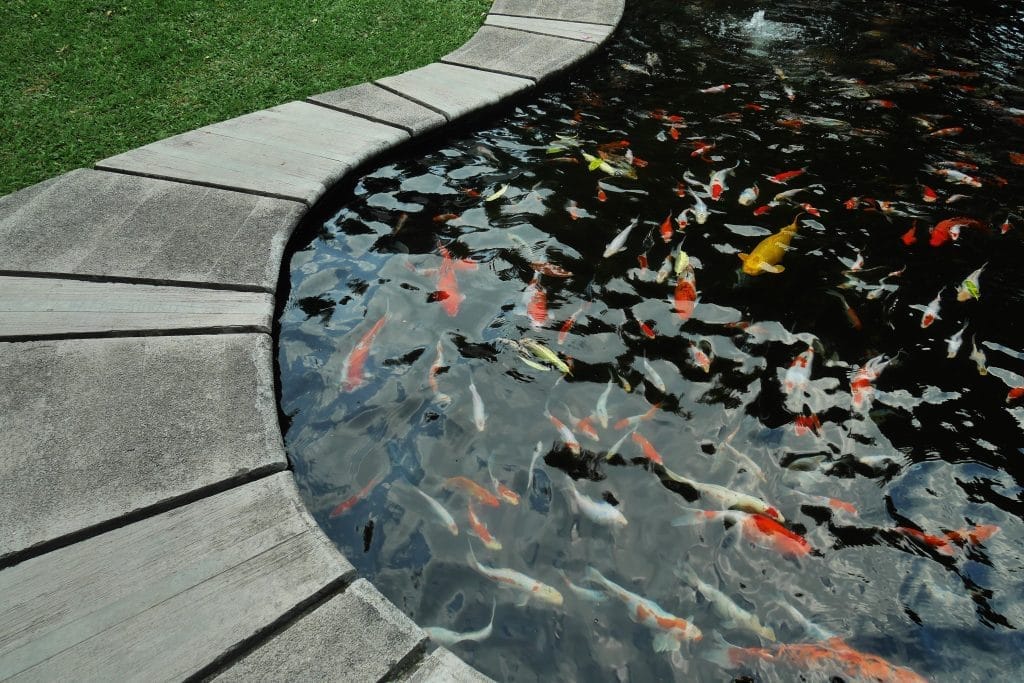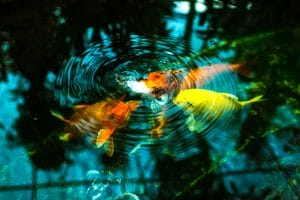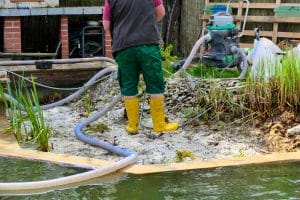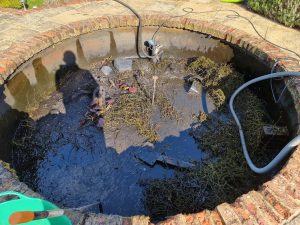
Do Ponds Need Water Changes? Understanding Maintenance for Healthy Ecosystems
Pond owners often wonder whether changing the water in their ponds is necessary for maintaining a healthy ecosystem.
The answer varies. However, in general, ponds do not require frequent water changes if they are well-maintained with proper filtration and balanced fish populations.
Understanding the factors that influence water quality can help pond owners make informed decisions.

Regular water tests and monitoring can indicate when changes are needed.
Factors such as the number of fish, types of plants, and the pond’s design all play important roles in determining water quality.
By keeping an eye on these elements, owners can effectively manage their ponds without the need for drastic water changes.
Key Takeaways
- Ponds often thrive with minimal water changes when well-maintained.
- Monitoring water quality is essential for a healthy pond ecosystem.
- Proper filtration and balance of wildlife help reduce the need for frequent changes.
The Necessity of Water Changes in Ponds
Maintaining healthy pond water is essential for the well-being of aquatic life. Regular water changes play a critical role in removing harmful substances and supporting a balanced ecosystem. This section explores the water cycle within ponds and the benefits of performing regular changes.
Understanding the Water Cycle
Pond water is a closed system influenced by various factors.
Water enters and leaves a pond through rainfall, evaporation, and runoff.
Over time, pollutants like nitrates and ammonia accumulate in the water.
Key Contributors:
- Evaporation: Causes water loss, concentrating pollutants.
- Runoff: Can introduce toxins from the surrounding area.
A filtration system, equipped with pond filters, helps reduce harmful substances by promoting beneficial bacteria.
This bacteria breaks down waste, but filtration alone may not remove all toxins. Therefore, understanding the necessity of partial water changes becomes crucial to maintain balance and clarity.
Benefits of Regular Water Changes
Performing regular water changes offers numerous advantages to pond health.
These changes dilute harmful substances and provide fresh water to the ecosystem.
Key Benefits:
- Removes excess nitrates and toxins, stabilising water quality.
- Supports oxygenation, enhancing fish and plant health.
- Reduces stress for fish by maintaining stable conditions.
It is advisable to change approximately 10% to 20% of the water every few weeks.
This frequency helps maintain a stable environment while allowing beneficial bacteria to thrive.
Although some well-maintained ponds may not require frequent changes, they still benefit from occasional water updates to ensure optimal conditions.
Frequency and Volume of Water Changes
Maintaining a proper schedule for water changes is crucial for the health of a pond. The frequency and volume of these changes can vary depending on pond size, the number of fish and plants, and other factors. Understanding how to balance these elements will help keep the pond ecosystem stable.
Determining the Right Schedule
The right schedule for water changes often depends on the specific conditions of the pond.
For smaller ponds, changing 10-20% of the water every two to four weeks is a common recommendation. This practice helps keep the water clean without causing too much stress to the existing ecosystem.
In larger ponds, water changes may be less frequent.
Some owners of larger ponds only perform small changes yearly, ensuring they top up the water as needed.
Monitoring water quality and fish health helps determine when changes are necessary.
When to Perform Large vs. Small Water Changes
Small water changes are beneficial for regular maintenance.
They help manage pollutants, maintain balanced nutrient levels, and support overall pond health.
A partial water change also helps preserve valuable bacteria in the pond, which are essential for biological filtration.
Large water changes may be appropriate during seasonal shifts or when a pond has become heavily polluted.
In such cases, replacing 50-70% of the water can rejuvenate the pond environment.
However, large changes should be done carefully to avoid shocking the system and harming the fish and plants.
Always consider the pond’s unique needs when deciding on the volume and frequency of water changes.
Pond Water Chemistry

Pond water chemistry is crucial for maintaining a healthy aquatic environment.
Key components such as ammonia, nitrates, and chlorine play significant roles in the overall water quality and the health of fish and plants. Understanding these elements helps in making informed decisions for water changes and treatment.
Role of Ammonia, Nitrates, and Chlorine
Ammonia is a natural by-product of fish waste and decaying organic matter.
High levels of ammonia can be toxic to fish.
Regular testing helps monitor ammonia levels, and it is essential to keep them low for fish safety.
Nitrates form from the breakdown of ammonia through beneficial bacteria in the pond. Though less harmful than ammonia, high nitrate levels can lead to algal blooms, which can disrupt the ecosystem.
A concentration of 20-40 mg/L is generally acceptable for healthy ponds.
Chlorine is often present in tap water and can be lethal to fish and other aquatic life.
When filling or changing water, it is vital to use dechlorinators to ensure that chlorine is neutralised. This step is essential to protect the pond’s inhabitants.
Understanding pH Levels and Minerals
The pH level of pond water indicates its acidity or alkalinity.
A stable pH of 6.5 to 8.5 is ideal for most fish and plants.
Sudden changes in pH can stress aquatic life, so it is important to test regularly and make gradual adjustments if necessary.
Minerals such as calcium and magnesium are also important for the water chemistry.
They help maintain water hardness and support the development of healthy fish and plant life.
A balanced level of these minerals contributes to the overall stability of the pond environment, creating a suitable habitat.
The Impact of Fish and Wildlife on Water Quality

The presence of fish and wildlife plays a crucial role in determining the quality of pond water.
Their behaviours and biological processes can directly influence levels of nutrients, toxins, and overall ecosystem health.
Stocking Levels and Feeding
Proper stocking levels are essential for maintaining pond water quality.
Overcrowding can lead to excessive competition for resources, increasing stress among fish and raising mortality rates. Koi fish, for instance, are popular in ornamental ponds but require careful management.
Feeding practices affect water quality as well.
Uneaten food decomposes, releasing waste and nutrients into the water.
This contributes to higher levels of ammonia and nitrates, which can stress fish and harm beneficial bacteria.
Keeping feed amounts in check is vital for maintaining a healthy environment.
Excretion and Bioload Management
The excretion of fish contributes significantly to the bioload in a pond.
Fish waste produces nutrients like ammonia, which can be harmful at high levels.
Managing this bioload is key to preventing toxic conditions and maintaining good water quality.
Beneficial bacteria help break down waste products in the pond.
These bacteria convert harmful substances into less dangerous forms, but they require a balanced ecosystem to thrive.
Regular monitoring of water quality, including parts per million (ppm) of ammonia and nitrates, can guide interventions that support both fish health and water quality.
Water Sources and Treatment

Understanding how to treat water before using it in a pond is crucial. This section discusses the importance of treating tap water and how to identify any contaminants that may affect pond health.
Treating Tap Water Before Use
When filling a pond with tap water, it is essential to treat it to remove harmful chemicals.
Most tap water contains chlorine and chloramines, which can be detrimental to fish and plants.
Chlorine is a common disinfectant used in municipal water systems, while chloramines are a more stable form that can linger in water.
To effectively neutralise these chemicals, one can use dechlorination products, which are available at pet or garden supply stores.
It is advised to wait at least 24 hours after adding tap water before introducing any fish.
This allows time for any residual chemicals to dissipate, ensuring a safer environment for aquatic life.
Identifying and Eliminating Contaminants
Pond owners should regularly monitor water quality to identify pollutants.
Key indicators of contamination include cloudy water, unpleasant odours, or unusual fish behaviour.
Common pollutants may include organic matter such as leaves and debris, which can decay and release toxins.
Regular water changes help dilute these contaminants.
To eliminate pollutants, pond owners can perform water tests using kits available in stores.
These tests check for pH, ammonia, nitrates, and other harmful substances.
If contaminants are found, appropriate actions can be taken, such as applying activated carbon or performing a partial water change to restore balance.
Filtration and Aeration Systems
Effective filtration and aeration systems are vital for maintaining a healthy pond environment.
They facilitate clean water and promote a balanced ecosystem, which is essential for fish and plant life.
Mechanical Filtration Basics
Mechanical filtration is the first line of defence against debris in a pond. It physically removes solid particles such as leaves, dirt, and fish waste through a filtration system.
Common types include sponge filters, bead filters, and pressure filters.
A pond pump is often used to circulate water through these filters.
The flow rate should be suitable for the pond size to ensure efficient filtration.
Regular cleaning of the filter media is necessary to maintain its effectiveness.
Owners should inspect filters every few weeks. Blocked filters can lead to poor water quality.
The Importance of Biological Filtration
Biological filtration involves the breakdown of harmful substances in the water through beneficial bacteria.
These bacteria convert toxic ammonia and nitrites from fish waste into less harmful nitrates. This process is crucial for maintaining water quality.
A well-designed pond filter should include a biological filtration element, which provides a surface for these bacteria to thrive.
Media like bio-balls or ceramic rings can enhance this process.
Keeping the biological filter clean is essential, but excessive cleaning can disrupt the bacteria colonies. Thus, minimal interference is recommended.
Optimising Pond Aeration
Aeration enhances oxygen levels in the water, benefiting fish and other aquatic life.
It can be achieved using diffusers, fountain systems, or surface aerators. Each method has its own advantages, depending on the pond size and depth.
Regular aeration prevents the water from becoming stagnant and helps to mix the water layers.
This mixing is crucial, especially in deeper ponds where oxygen levels vary.
When aeration systems are in place, fish can utilise more of the pond’s volume, leading to a healthier ecosystem.
Aeration systems should be maintained regularly to ensure they function effectively throughout the seasons.
Handling Algae Growth and Blooms
Algae can quickly take over a pond if not managed properly. Maintaining water quality and balance is crucial to prevent unwanted algae blooms. Here are essential steps to handle algae effectively.
Maintaining Balance to Prevent Algae
To avoid algae growth, it is important to keep the pond’s ecosystem balanced.
This involves monitoring water quality regularly.
Key factors include:
Nutrient Levels: High levels of nutrients, especially nitrogen and phosphorus, can lead to blooms. Testing water can help identify excess nutrients.
Beneficial Bacteria: Adding beneficial bacteria can help break down organic matter and compete with algae for nutrients, thus limiting their growth.
Plant Cover: Using aquatic plants can provide shade and absorb nutrients, reducing sunlight for algae and thus limiting growth.
Additionally, regular water changes help maintain good water quality.
A 10-15% change every couple of weeks can dilute nutrient levels and enhance the pond’s overall health.
Dealing with Algae Overgrowth
If algae blooms occur, there are several steps to manage the problem.
First, physical removal of algae may be necessary. This can be done using nets or rakes.
Next, consider:
Water Changes: Implementing larger water changes can help reduce the density of algae and improve water quality.
Chemical Treatments: While chemicals can kill algae, they may also harm beneficial organisms. Use them with caution.
Aeration: Increasing oxygen levels through aeration can help support fish and beneficial bacteria. It also aids in breaking down algae.
Preventative Pond Maintenance
Regular upkeep is essential for a healthy pond. Effective maintenance helps prevent common issues like algae blooms and ensures water quality remains optimal. Understanding routine checks and potential problems can significantly ease the burden of pond care.
Routine Checks and Seasonal Considerations
Routine checks should be done regularly to monitor the pond’s health.
Testing water quality is crucial; regular kits can check for pH levels, ammonia, and nitrates.
Maintaining balanced water conditions supports fish and plant life.
Seasonal maintenance involves removing debris, especially in autumn.
Leaves can decay and clog filters, causing water stagnation.
Inspecting and cleaning pond filters regularly supports proper filtration, helping prevent algae blooms.
Winter preparation is also vital.
Ensure the pond is not frozen solid to protect fish. Aeration devices can help maintain oxygen levels during colder months.
Common Pond Problems and Solutions
Algae blooms are a frequent issue in ponds, often arising from excess nutrients.
To combat this, it is vital to avoid overfeeding fish and to consider adding plants that consume these nutrients.
If cloudy water occurs, it may signal a problem with the pond filter or poor water quality.
Regularly cleaning and maintaining the filter will reduce waste and improve water clarity.
In cases of stagnant water, partial water changes can help.
Removing 10 to 20% of the water and replacing it with fresh water dilutes any harmful substances.
This method can effectively enhance the pond’s overall health and appearance.
Best Practices for Changing Pond Water
When it comes to changing pond water, knowing the right techniques is essential. Safe removal of old water and appropriate replacement methods ensure the health of the pond. Additionally, adjusting water change practices based on pond size is crucial for maintaining balanced water conditions.
Safe Removal and Replacement Techniques
For effective water changes, it is important to perform small or partial water changes regularly. This approach helps in maintaining water quality without stressing the fish.
Typically, changing 10-20% of the pond water every two weeks is recommended.
Using a siphon is a safe method for water removal. It allows for efficient draining while avoiding damage to plants and other features in the pond.
Care should be taken to remove settled debris, but not to disturb the beneficial bacteria in the pond.
When replacing water, using dechlorinated water is vital to protect aquatic life. Adding a water conditioner can help remove harmful chemicals.
Keeping the water temperature similar to that of the pond will also reduce shock to fish and plants.
Adjusting Water Change Practices to Pond Size
The size of the pond plays a critical role in how water changes are managed.
Smaller ponds may require more frequent water changes due to limited volume. In contrast, larger ponds with good filtration systems might not need changes as often.
For ponds under 500 gallons, it is advisable to perform small water changes of about 10-15% monthly. This ensures that toxins don’t build up quickly.
In larger ponds, smaller changes of 5-10% can suffice.
Proper filtration can help maintain water quality, potentially reducing the need for more frequent changes.
Regular monitoring of water parameters, such as ammonia and nitrite levels, can help determine the right timing for water changes.
Pond Ecosystem Health
Maintaining a healthy pond ecosystem is crucial for the wellbeing of fish and plants. Key factors include promoting beneficial bacteria while managing water quality. Regular testing helps to avoid issues like algae blooms and keeps the ecosystem balanced.
Promoting a Healthy Biological Balance
A balanced pond ecosystem relies on beneficial bacteria. These microorganisms break down waste and support fish health.
Introducing bacteria cultures can enhance the natural processes of the pond.
Adding aquatic plants also plays a vital role. They provide oxygen and absorb excess nutrients.
Reducing nitrogen levels prevents the growth of harmful algae blooms.
It is essential to avoid drastic water changes, as these can disturb the ecosystem.
Instead, aim for partial changes. Removing 10-20% of water periodically helps maintain quality without shocking the inhabitants.
Monitoring Systems and Regular Testing
Regular testing of pond water is important for detecting problems early.
Key parameters to monitor include pH, nitrates, and ammonia levels.
These factors greatly influence water quality and fish health.
Using testing kits or professional services can ensure accurate results.
Maintaining a consistent testing schedule, perhaps bi-weekly, provides insight into the pond’s condition.
Installing a filtration system aids in managing water quality.
It helps circulate and filter debris, contributing to a healthier environment.
A well-functioning filtration system reduces the need for frequent water changes, making pond maintenance easier.
Related Posts
- Garden Pond Cleaning & Maintenance Service: Essential Care for a Thriving Aquatic Environment
- Raised Pond with Railway Sleepers
- Why Does My Pond Smell Bad? Common Causes and Solutions Explained
- I Want Someone to Build Me a Pond: Key Considerations for Your Project
- 10 Common Mistakes Homeowners Make with Their Ponds: Ensuring a Healthy and Beautiful Water Feature
- Gordon low, PondGard EPDM Rubber Pond Liner: Essential for Durable Water Features
- How To Protect Fish From Herons: Effective Strategies for Fishkeepers
- Aqua Pond Ltd: Experts in Professional Pond Cleaning Services



